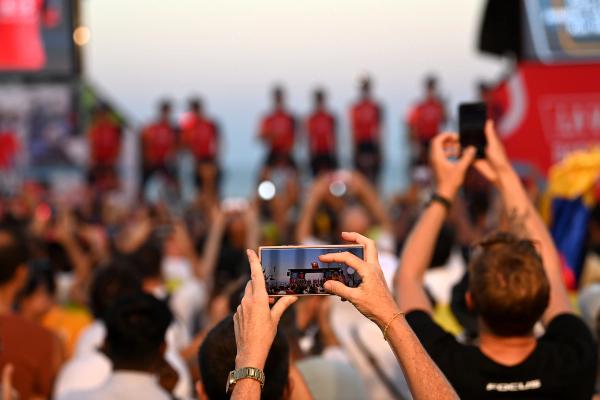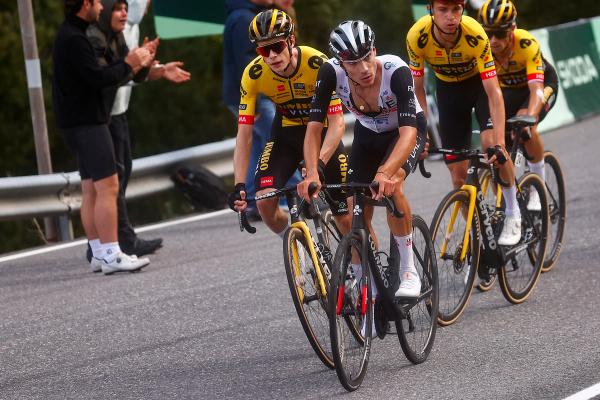Alto de l'Angliru: The making of the Vuelta a España's iconic climb
From El Chava to Contador, via Millar, Wiggins, and Roglič, we look back at the eight previous ascents to chart the characters and controversies of the most notorious mountain in pro cycling
Patrick Fletcher
Deputy Editor
© Velo Collection (TDW) / Getty Images
The Angliru has seen more than its fair share of pain faces over the years
When you think of the Tour de France, you think of the Col du Tourmalet, Alpe d’Huez, Mont Ventoux. When you think of the Giro d’Italia, you think of the Stelvio, the Mortirolo, Monte Zoncolan. When it comes to the Vuelta a España, however, the names don’t roll off the tongue in the same way.
But still, there is one that has fully acquired legend status: Angliru.
The Alto de l’Angliru - to give it its full title - is a climb notorious for its sheer difficulty, its legend forged across eight dramatic visits from the Vuelta a España over the past quarter of a century.
In the heart of the Asturias mountains in northern Spain lies this beast, measuring 12.4km at an average gradient of almost 10%. In reality, though, the lower slopes are a walk in the park compared to the final 7km, which average well into the double digits and feature ramps over 20%.
At this point, it can simply become a battle to maintain momentum, a slow-motion contest where riders don't so much attack as fade faster or slower. In fact, its very severity has led to questions about whether such extreme slopes belong in pro racing at all, and the first visits were mired in controversy, most notably the 2002 edition that ended with David Millar, who features in our GCN+ documentary, Angliru, quitting the race in protest.
That was the third visit, and the Vuelta has been back five times since, with a ninth appearance to take place on Wednesday on stage 17 of the 2023 edition. Ahead of that occasion, we've revisited each of the previous visits to understand the characters and storylines that have imbued the Angliru with such a strong reputation in such a short space of time.
Read more: Climbing the Angliru, one of cycling's most feared climbs
1999, stage 8: A star is born
The Vuelta’s infatuation with the Angliru began even before it was ridden. The organisers were on the lookout for an emblematic and marketable climb to match the likes of the Tour de France’s Alpe d’Huez, and the story goes that the race directors jumped straight on a tip from a staff member of the ONCE team who’d stumbled upon this newly-paved cattle road while hiking. It was, he said, so steep as to guarantee spectacle.
The climb was heavily hyped and its instant impact would be confirmed as stage 8 of the 1999 Vuelta made its way up in a thick fog, persistent rain, and icy wind. Riders running out of gears and race vehicles similarly getting stuck on the double-digit gradients underlined just how novel a challenge this was. The lack of visibility on the mountainside, illuminated by car headlights, only deepened the chaos and confusion.
José María Jiménez - aka El Chava - wrote his name into the history books as the first rider to conquer the Angliru, and in a way that would only enhance the mountain’s mystique. When the mercurial Spanish climber set off after lone leader Pavel Tonkov, he still trailed by around 40 seconds with 1500 metres to go, but suddenly, inside the final 500 metres, he was upon the Russian.
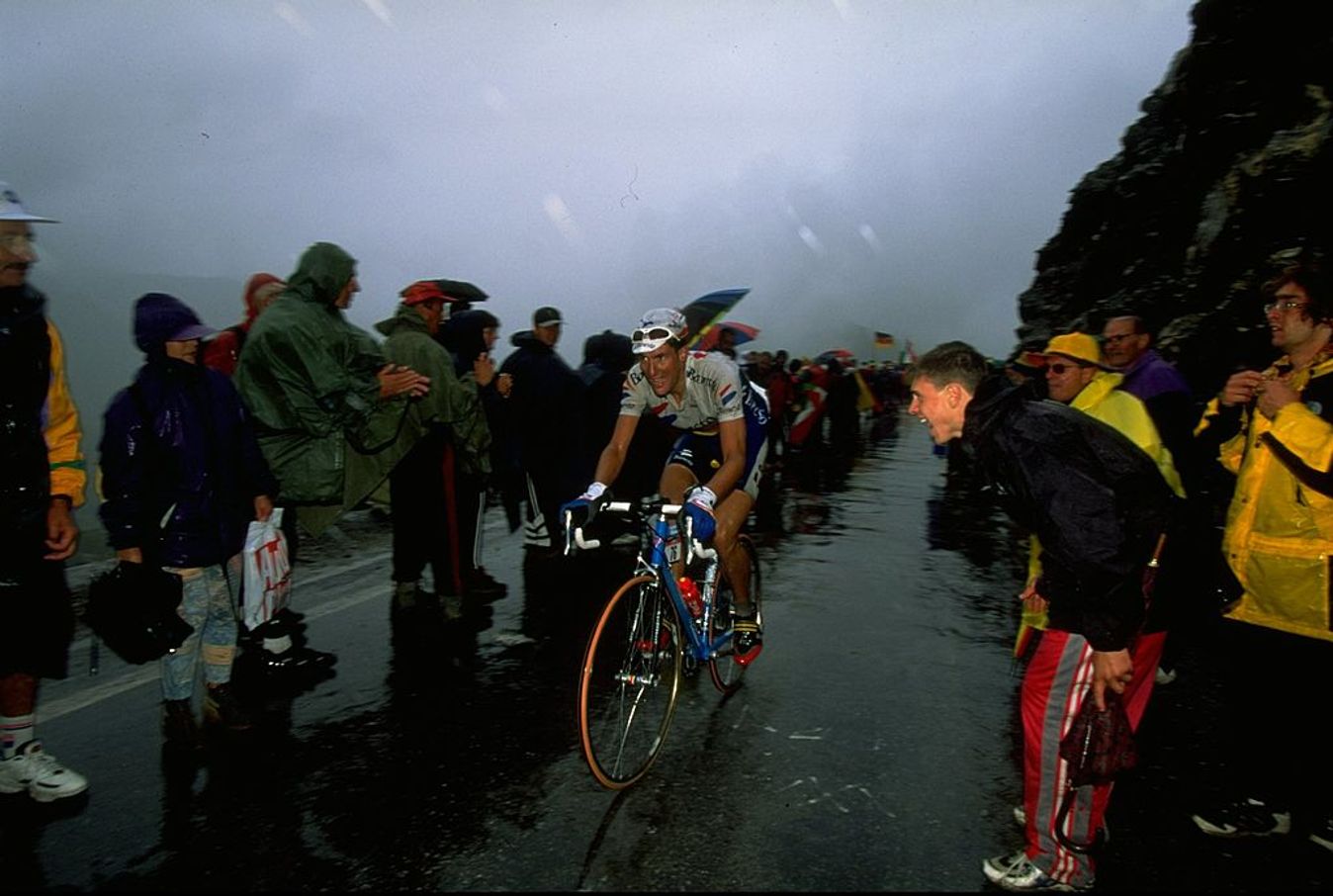
© Velo Collection (TDW) / Getty Images
José María Jiménez was a fan favourite and the first winner atop the Angliru
Rumours that he made use of the fog to hold onto a car undetected have never been settled. Either way, the pair sprinted it out at the top, although it wasn’t much of a sprint as the motorbikes in front of them offered no space, and Jiménez ended up rolling home first, in the middle of a fleet of vehicles.
The battle between the main general classification protagonists unfolded a little further down the mountain, with reigning champion Abraham Olano putting more than a minute into the 1997 Tour de France champion Jan Ullrich. However, little did he know it at the time, Olano had cracked a rib in a crash on the penultimate descent, and he would abandon the Vuelta a week later, with Ullrich cruising to his second Grand Tour title.
As for Jiménez, he finished the race in fifth position, but it wasn’t long before his career and life came to an end. Struggling with drug and alcohol problems, he retired at the end of 2001 and died from a cardiac arrest in 2003 at the age of 32, just four years after cementing his name in the legend of the sport.
2000, stage 16: Heras takes charge
The Vuelta’s first visit to the Angliru was deemed such a success that an instant return was lined up for the millennium edition, although it was perhaps a case of the difficult second album syndrome.
Although cloudy, the conditions were far more clement than the previous year, and the race situation was calmer, too. A large breakaway went up the road, and was allowed enough of a margin to contest the victory on the Angliru. Gilberto Simoni, third overall at the Giro d’Italia earlier in the year but already well down on GC, dropped his companions near the bottom of the climb and soloed all the way to the top.
What the cameras were more interested in was the battle for the overall title, and it was a key step in Roberto Heras’ march to the first of his record four Vuelta titles. The Spaniard, who’d clinched the final podium spot behind Jiménez and Tonkov in 1999, and would have more to say on the Angliru in the future, dominated the ascent. That was partly thanks to his Kelme teammate, Fernando Escartín, who led the GC group onto the climb and dropped everyone but Heras halfway up.
Tonkov did come back and even launched an attack of his own, but he was soon countered by Heras, who then stomped to the top, picking off all but two of the breakaway riders to once again place third on the stage. By the summit, he’d put 90 seconds into Tonkov and a more remarkable four minutes into Ángel Luis Casero, who was in fact his biggest threat.
Heras went on to win the penultimate stage and could afford to lose two minutes to Casero in the final time trial while sealing his first Grand Tour title.
2002, stage 15: A barbarity, a protest, and a turning point
Heras was at it again on the Angliru in 2002, although this visit isn’t remembered for his exploits or even the impact they had on that edition of Vuelta as a whole. Instead, the 2002 Angliru is remembered as one of the most dramatic and controversial episodes in recent history, and a sort of seminal moment for the sport as a whole.
The post-race quotes themselves are already the stuff of cycling legend. “What do they want? Blood?” was the famous line from Kelme director Vicente Belda, who described the Angliru as a “barbarity”. Meanwhile, David Millar raged that it was “inhuman” and that the riders were being treated like “performing bears".
It’s Millar, rather than Heras, who most readily comes to mind when thinking about the Angliru in 2002. The British rider staged a protest at the summit, stopping 50 metres short of the finish line, removing his bib number, and quitting the race on the spot.
Millar had crashed twice and was hit by a team car on the descent from El Cordal, which, as Olano had found three years previously, was an ice rink in the wet and torrid conditions that had returned this time around. But it wasn’t just the weather. The Angliru was also deemed a circus act, with a feeling among the riders that they were being forced to perform on stupidly steep ramps with insufficient gearing, just so the race could just grab some - any - kind of attention.

© Velo Collection (TDW) / Getty Images
Roberto Heras finishes in the gloom
Although Millar’s protest was an iconic moment in the drive for rider safety that has gathered pace in recent years, the Vuelta was ultimately undeterred by the criticism, with crazily steep cattle tracks arguably its modern hallmark, and the other Grand Tours following suit. For that reason, it’s no exaggeration to say that the Angliru has helped change the face of the sport.
“At that time, we didn’t have the equipment to do it properly, and it was almost off the back of that we started to change the equipment," Millar says in our GCN+ documentary. "Bike companies had to start making compacts, which was no longer shameful, because when I turned pro in 1997 it was almost a sign of weakness if you had a small gear, but I think actually it was the Angliru that started to change that. Then other races saw it and thought ‘Why don’t we find goat tracks we can send them up?’ and the whole sport started to change.”
Millar officially did not make it to the top of the Angliru in 2002 but Heras did, more than 90 seconds clear of his nearest competitor in another display of dominance. It did not, however, pave the path to a second overall victory, as Aitor González overcame a three-minute deficit in the final time trial to snatch the title.
2008, stage 13: Contador schools Valverde and Rodríguez
Perhaps owing to the controversies of 2002, the Vuelta and the Angliru had a cooling-off period until it was safe for a reunion in 2008. By then, there was a new generation of Spanish stars coming through, led by Alberto Contador, one of the Angliru’s most famous protagonists. Contador had won the Tour de France in 2007 and the Giro d’Italia in 2008 and was the hottest property in the sport.
He already had a lead of more than a minute over his main rivals as the Angliru reared up towards the end of the second week, and that only increased by the summit. The biggest scalp came in the form of Carlos Sastre, the newly-crowned Tour de France champion, who was dropped more than 6km from the summit under the impetus of Contador’s luxury domestique at Astana, Levi Leipheimer. In fact, only two other riders were able to live with the American’s pace: the Caisse d’Epargne duo of Alejandro Valverde and Joaquim Rodríguez.
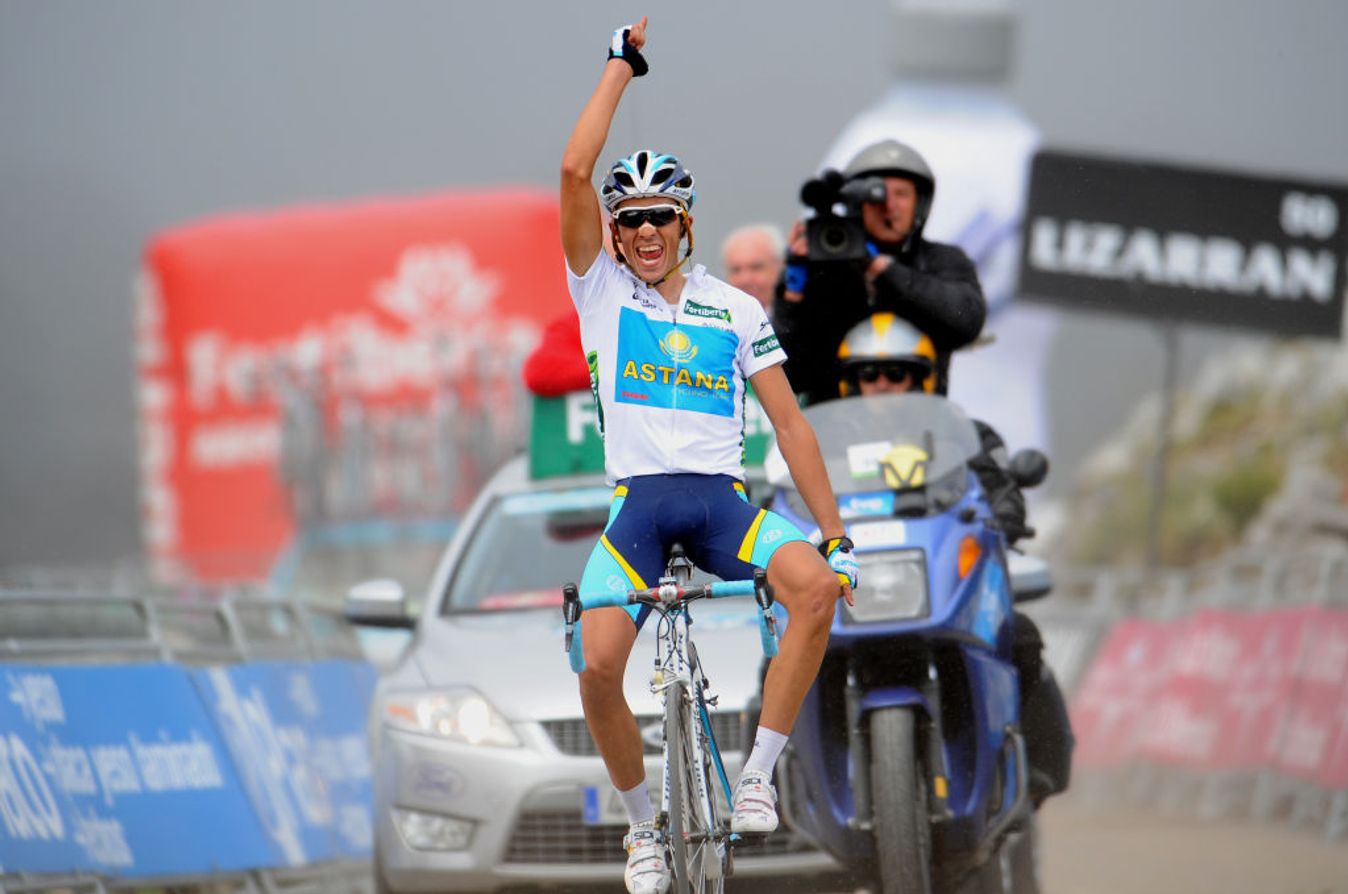
© Velo Collection (TDW) / Getty Images
Alberto Contador fires off his Pistolero salute at the top of the Angliru
It was actually Valverde who accelerated to get rid of Leipheimer and prevent Sastre from coming back, but even though he and Rodríguez were left with Contador at their disposal, it was they who were disposed of. Contador launched a vicious acceleration 5km from the top and then set such a pace the other two couldn’t think about doing anything other than hanging on. They did so for another kilometre before Valverde had to relent, and then Rodríguez went slipping as Contador kicked again and danced through a 20% hairpin.
He was never seen again, and he crossed the line performing his ‘Pistolero’ gunshot salute that would become his trademark. Behind, Valverde found a second wind to finish ahead of Rodríguez, while Leipheimer attacked Sastre to finish fourth.
Contador, now in the gold jersey as overall leader, would come out on top again 24 hours later, with Leipheimer in second place, and the pair would perform another 1-2 - this time the other way around - in the final-day time trial as Contador sealed his third Grand Tour title in two seasons and, you guessed it, Leipheimer stood below him on the second step of the podium in Madrid.
2011, stage 15: Wiggins, Froome, and Cobo
The 2011 Vuelta treated us to a surreal spectacle on the Angliru, along with the true breakthrough of Chris Froome, not to mention the first seeds being thrown in his intra-Sky rivalry with Bradley Wiggins.
At the time, Juan José Cobo won atop the Angliru and went on to the Vuelta, but that would prove to be a sham as the Spaniard was busted for doping, albeit several years later. The title would eventually fall to Froome, for whom the Vuelta represented a major turning point; until then he’d achieved few results of note and was on the verge of being released by Sky, but he’d go on to win the Tour de France four times, as well as the Giro d’Italia and another Vuelta.
Froome’s role on the Angliru in 2011 - another occasion mired in the mist - was one of damage limitation for Wiggins, or so it seemed. The pair were 1-2 on GC, Wiggins in red, with Cobo in fourth behind Bauke Mollema. Cobo launched his assault more than 6km from the summit, exploding the GC group, but even then he appeared less of a threat than Vincenzo Nibali, the defending champion who was already waning and whose challenge would end on the Angliru. And yet Cobo sailed clear, picking off breakaway leader Igor Antón and soloing all the way to the summit.
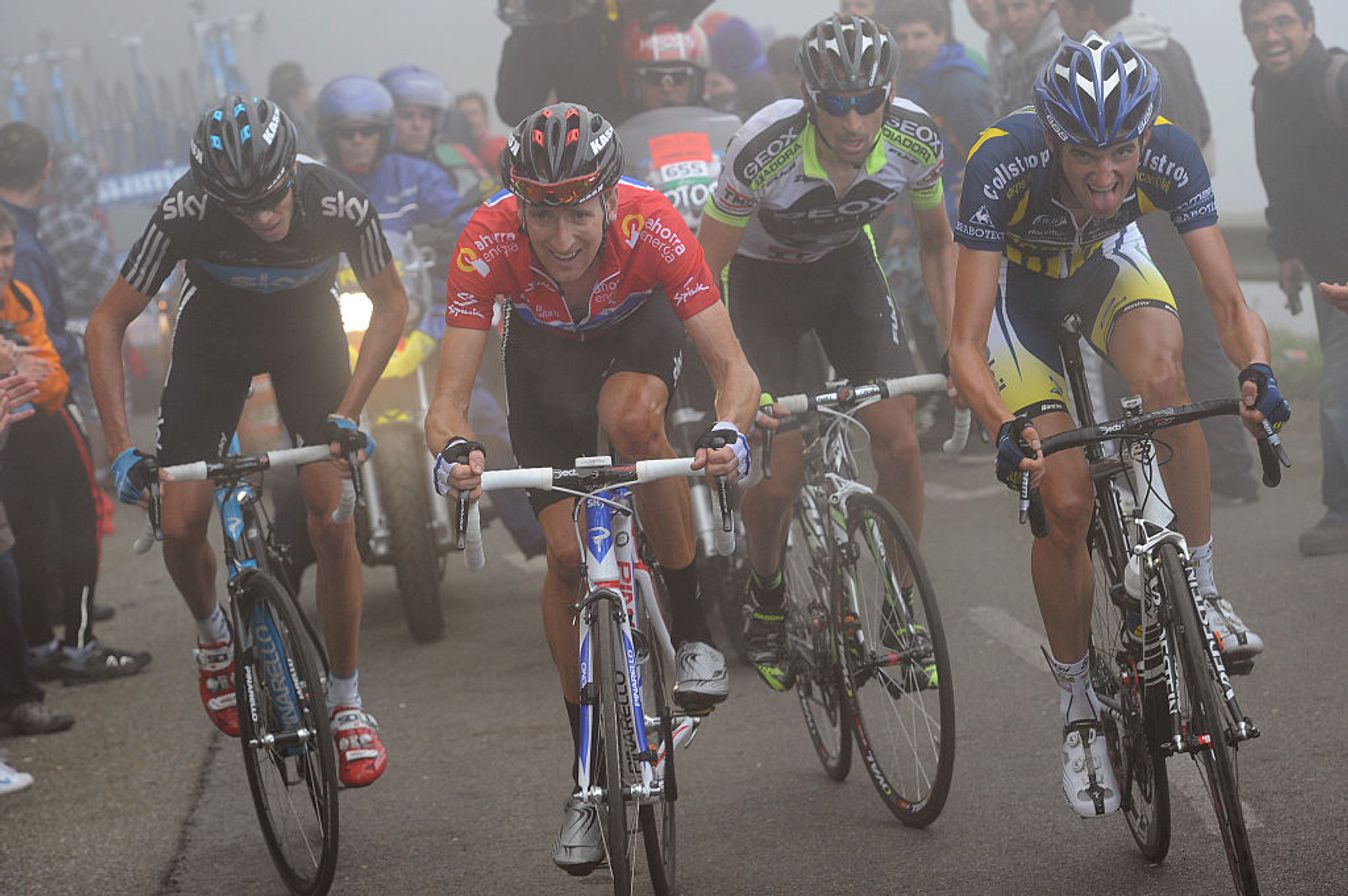
© Velo Collection (TDW) / Getty Images
Bradley Wiggins in trouble on the Angliru
The Cueña les Cabres section with 3km was the most striking section of the climb on this occasion. The fans that lined the road were more numerous than ever before, creating a wall of noise and a parting sea for the riders as the road dramatically hugged the mountain and ascended into the mist. Cobo looked cool, composed, and fluid. Behind, Wiggins went into crisis. The red jersey - winner of the Dauphiné but an early abandoner of the Tour de France - starting swinging, shoulders slumped, head down, weaving across the road. Froome, all pointy elbows and knees, would drift behind before making awkward, out-of-the-saddle darts in front on the double-digit gradients.
Froome rode much of the climb in support of Wiggins, which made what happened next so surprising. On the final steep ramps, before the road flattened out in the final few hundred metres, he went clear with Wout Poels and Denis Menchov, leaving Wiggins alone in the very part of the climb where he actually needed the slipstream.
The balance of power had shifted in an instant, and Froome leapfrogged Wiggins on GC - although Cobo was now in red. Froome would confirm himself as Sky’s main man two days later as he pipped Cobo to the top of Peña Cabarga, and while it would only become clear several years later, his Grand Tour-winning journey began there.
2013, stage 20: Horner and Nibali slug it out
There was a sense of déjà-vu in 2013 as the Angliru served up another surprise package, and another misty ascent. This time, it was Chris Horner, who, on the Vuelta’s penultimate day, would seal the overall title at the age of 41.
Horner had been chipping away at Vincenzo Nibali’s lead throughout the final week and indeed was in the red jersey by the time they reached the Angliru. However, he was still seen as the underdog. This was Nibali, after all, winner of the 2010 Vuelta and this year’s Giro. The US rider, meanwhile, had relatively scant Grand Tour pedigree and, at 41, was liable to crumble at any moment.

© Velo Collection (TDW) / Getty Images
Vinvenzo Nibali and Chris Horner size each other up on the Angliru
Except he didn’t. Nibali was praying for rain, arguing that it would force Horner to ride the Angliru seated, and also hinting at an attack off El Cordal, the scene of so many previous crashes. He even placed key men in the breakaway, hinting at a long-range offensive, but the rain held off. Still, Nibali didn’t wait long on the Angliru, accelerating once they hit the first super-steep section with just under 7km still to climb. Horner, joined by Valverde and Rodríguez - now on opposing teams - led the response, and the climb developed into a grinding battle.
After finding teammates Paolo Tiralongo and Jakob Fuglsang from the break, Nibali prepared his last bullets and launched a volley of attacks to try and finally crack his rival. But Horner would not be shaken. In fact, he turned the tables, reducing Nibali to wheel-clinging as he forced the issue in the final 2km. He then rose from the saddle on a double-digit hairpin, Nibali attempted to do the same but sat back down, nothing left in the legs, and the Vuelta was done and dusted.
Kenny Elissonde won the stage from the breakaway in the pocket climber’s top career moment so far, while Horner stood atop the podium in Madrid the next evening.
2017, stage 20: Contador's final shot
Having tasted victory atop the Angliru nine years previously, Alberto Contador returned to leave his mark on the climb, and give his career a fairytale ending. The 2017 Vuelta was Contador’s final bow, and this final scene was true to the adventurous, no-tomorrow ethos he had emphasised in the latter act of his career.
And so Contador - author of historic raids such as Alpe d’Huez 2011, Fuente De 2012, and Formigal 2016 - became the first rider to attack on the descent of El Cordal and win atop the Angliru.
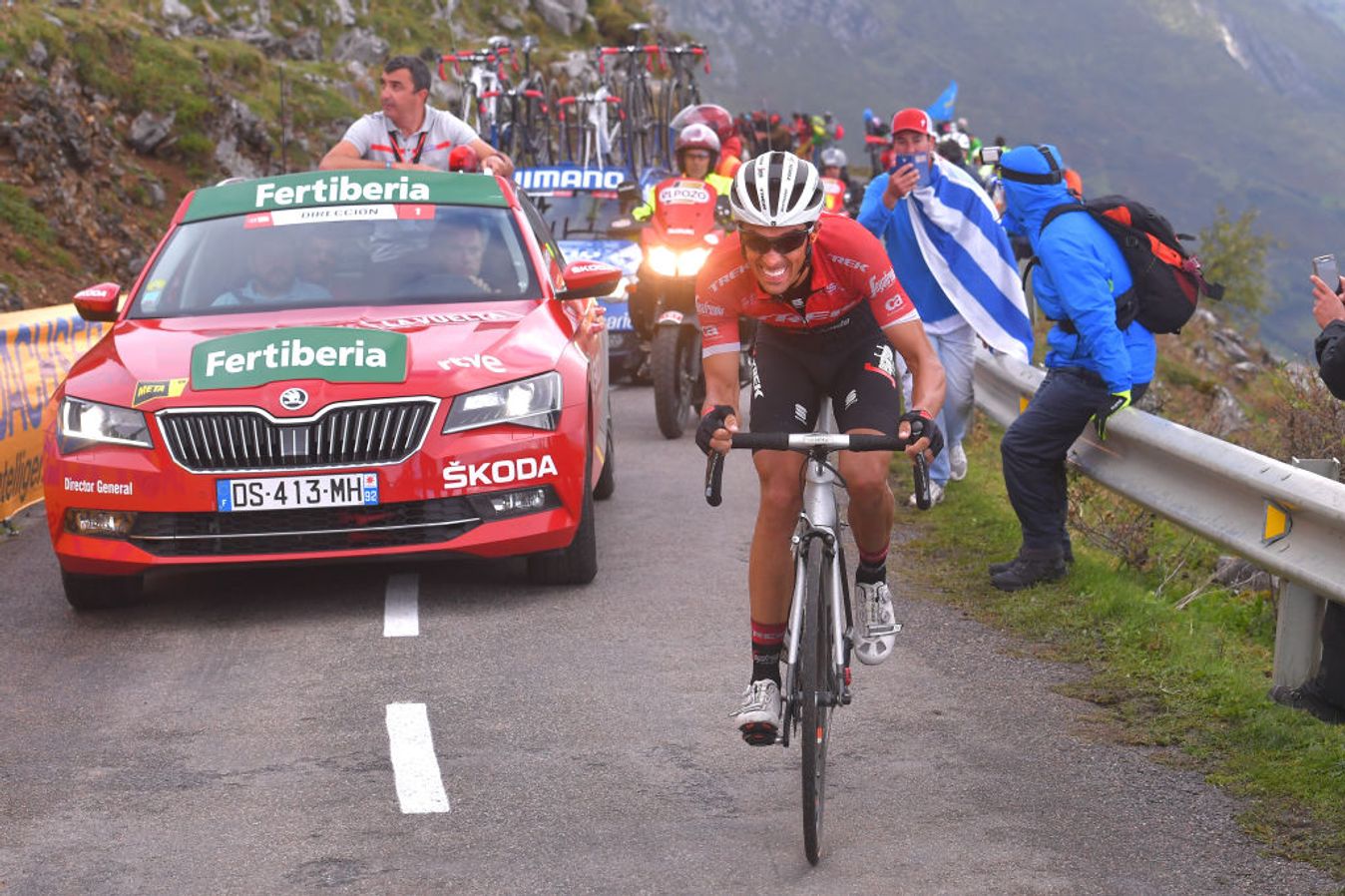
© Velo Collection (TDW) / Getty Images
Alberto Contador en route to a second win atop the Angliru
The rain was once again bucketing down, and riders - and even motos - were crashing left, right, and centre on the descent of the Cordal, but Contador sensed an opportunity and gave the nod to his teammate, Jarlinson Pantano.
Hitting the Angliru with a gap over the main GC riders, Contador, fifth overall, used his teammate on the lower slopes before hitting out on the steep stuff, picking off the remnants of the day’s breakaway and going solo more than 5km from the top. He danced his way up, one last time, in that characteristic style, and of course, he finished it off with the Pistolero salute.
It wasn’t enough to turn the race completely upside down, and walk away into the sunset with another Vuelta crown, but it was nevertheless a dream ending to one of the great careers.
Chris Froome was in the red jersey and had no problems sealing it, the only rider he had any trouble staying with was his own teammate, Wout Poels, who was floating up the climb and took second place on the day. For Froome, it was a second Vuelta title achieved by way of the Angliru, and the second in a remarkable sequence in which he’d end up holding all three Grand Tour titles simultaneously.
2020, stage 12 - Carthy soars, Roglič falters
The Vuelta’s most recent visit to the Angliru came in 2020 in the midst of the pandemic, and the complete absence of spectators made for an eerie occasion. With no fans, the views from the upper reaches of the mountain opened out, helped by the more agreeable weather conditions this time around.
There was a similar feel to this year’s Vuelta, as Jumbo-Visma dominated the stage, with Primož Roglič in red and supported three more members of the team’s current Vuelta squad: Robert Gesink, Jonas Vingegaard, and Sepp Kuss. Gesink worked the lower slopes, before Vingegaard, yet to make his breakthrough as a world-class rider, upped the pace on the steep stuff with 6.5km to go, reducing the group to 10 and dropping their teammate George Bennett before he’d had a chance to work.
However, the Jumbo mountain train didn’t stay on the tracks. When Enric Mas attacked 3.5km from the top, Vingegaard swung off and Kuss took over, but it soon became clear he was having to steadily pace his leader. It was almost like the others couldn’t believe Roglič was capable of showing any weakness, but once they saw that Kuss was indeed letting Mas drift away, they all started accelerating, too, and they all rode clear.

© Velo Collection (TDW) / Getty Images
Roglic in red and in trouble at the back as his rivals attack, with Hugh Carthy (in pink) going on to win
Hugh Carthy made his way over to Mas alongside Richard Carapaz, before making a gurning, lung-busting, all-body effort out of the saddle up the final steep ramps with 1500 metres to go. He was clear, and zipped through the faster final kilometre to take the biggest victory of his career.
Behind, Roglič conceded the red jersey to Carapaz but, thanks in part to Kuss, limited his damage to just 10 seconds, and he was back in red by the end of the time trial the following afternoon. Another moment of crisis would follow on the penultimate day on La Covatilla but again the Slovenian did just enough and sealed his second straight Vuelta crown.
If you enjoyed this article, you'll love our Angliru film, which is out now on GCN+. Watch on demand and explore our extensive collection of exclusive cycling films .
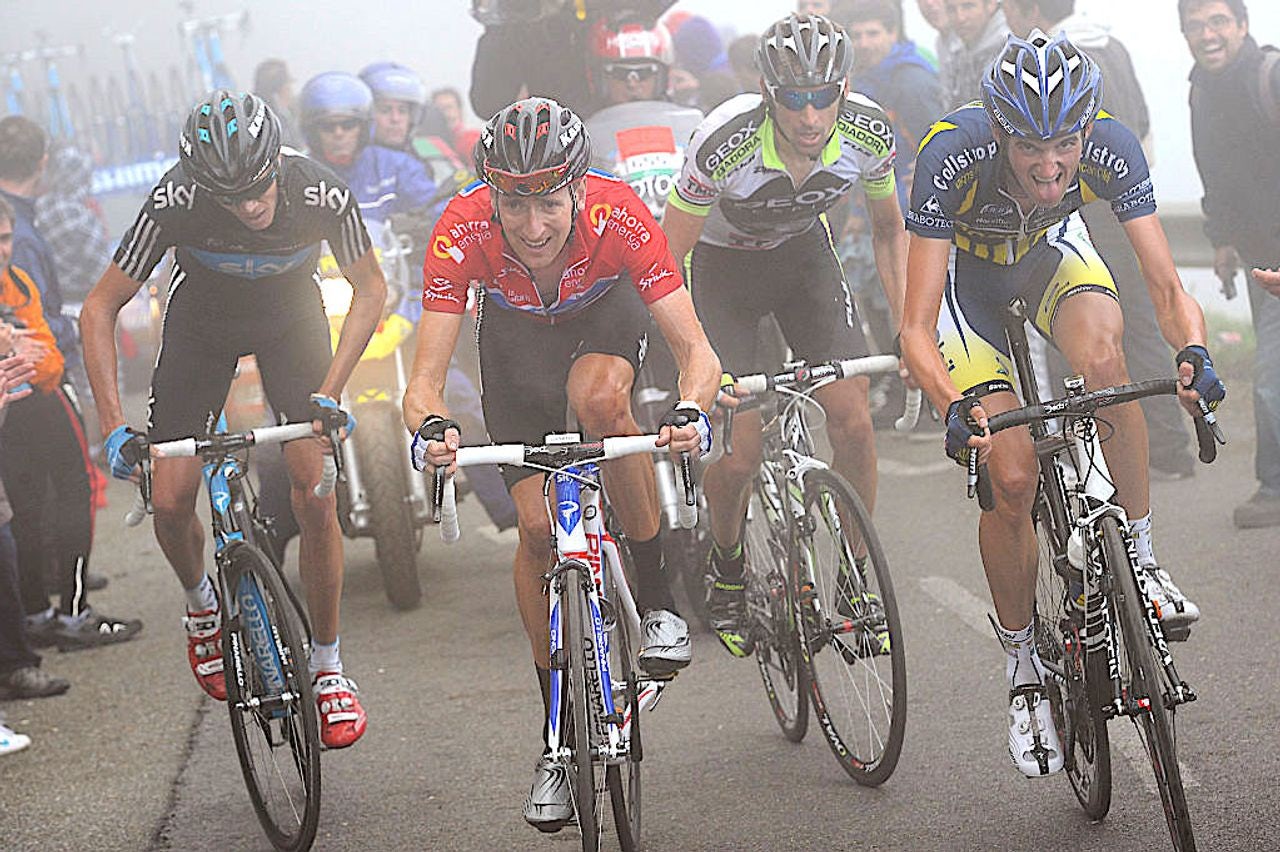




MAIN.jpg?w=600&auto=format)







